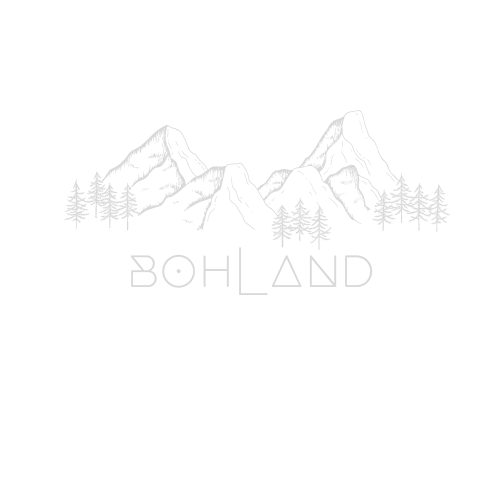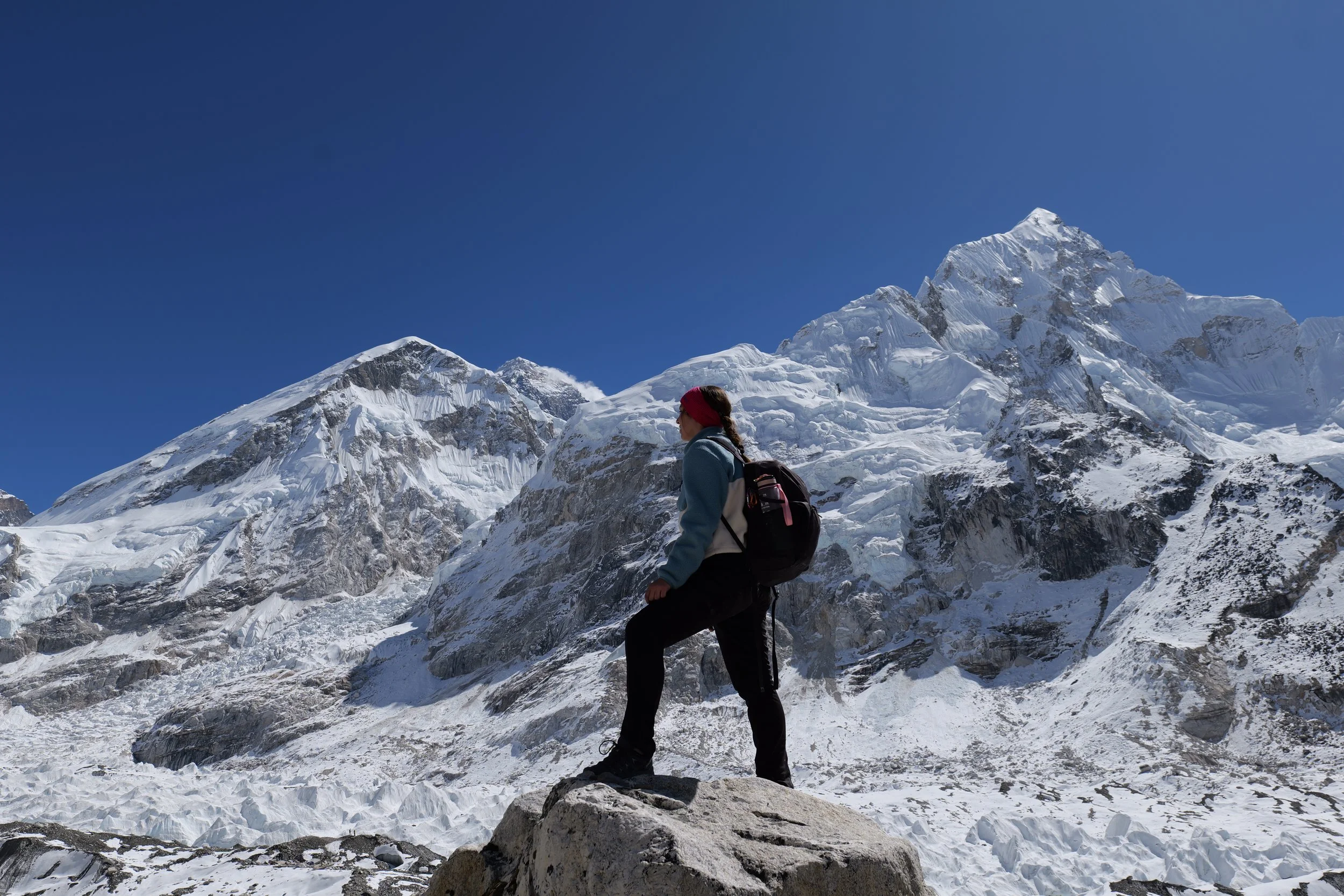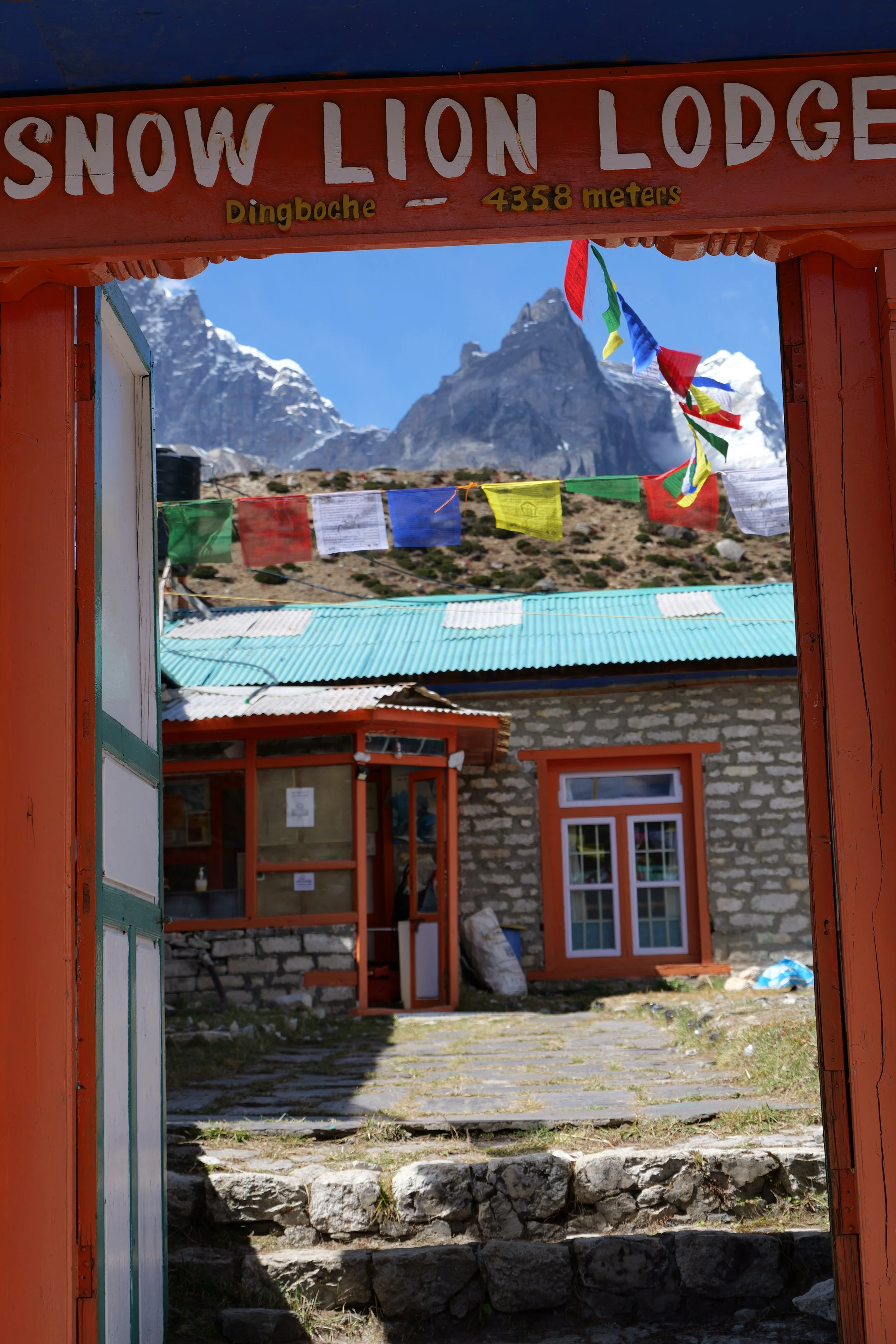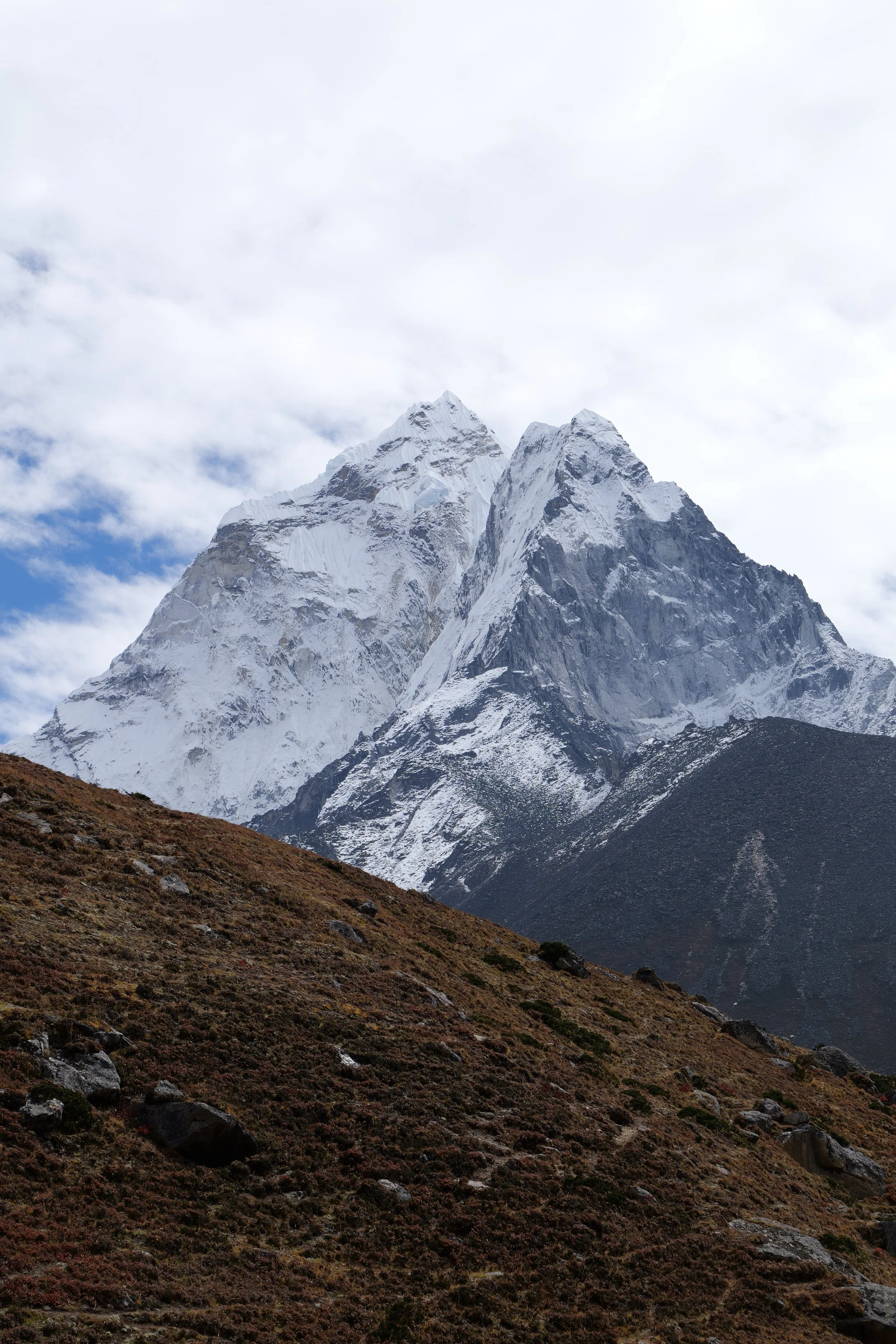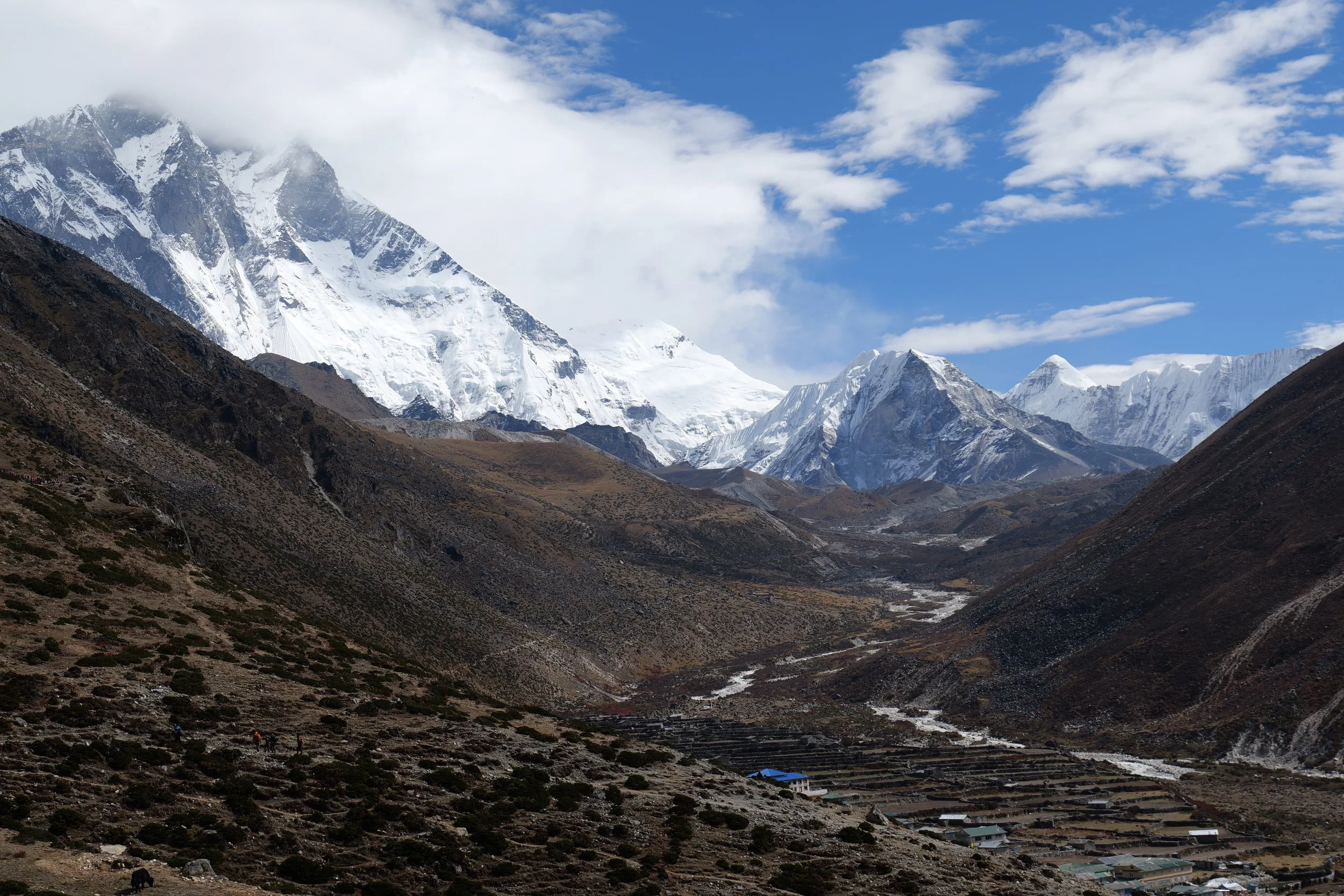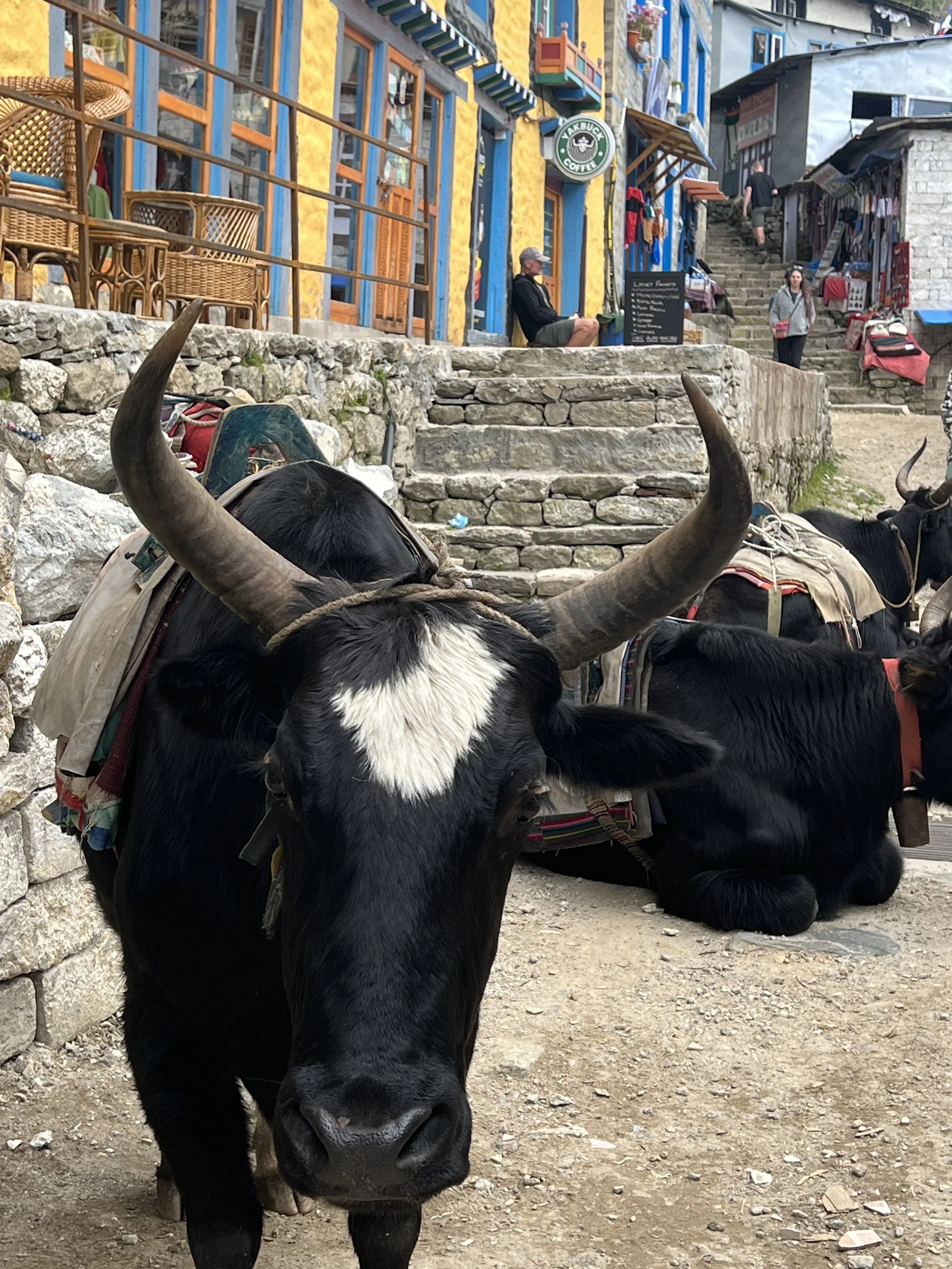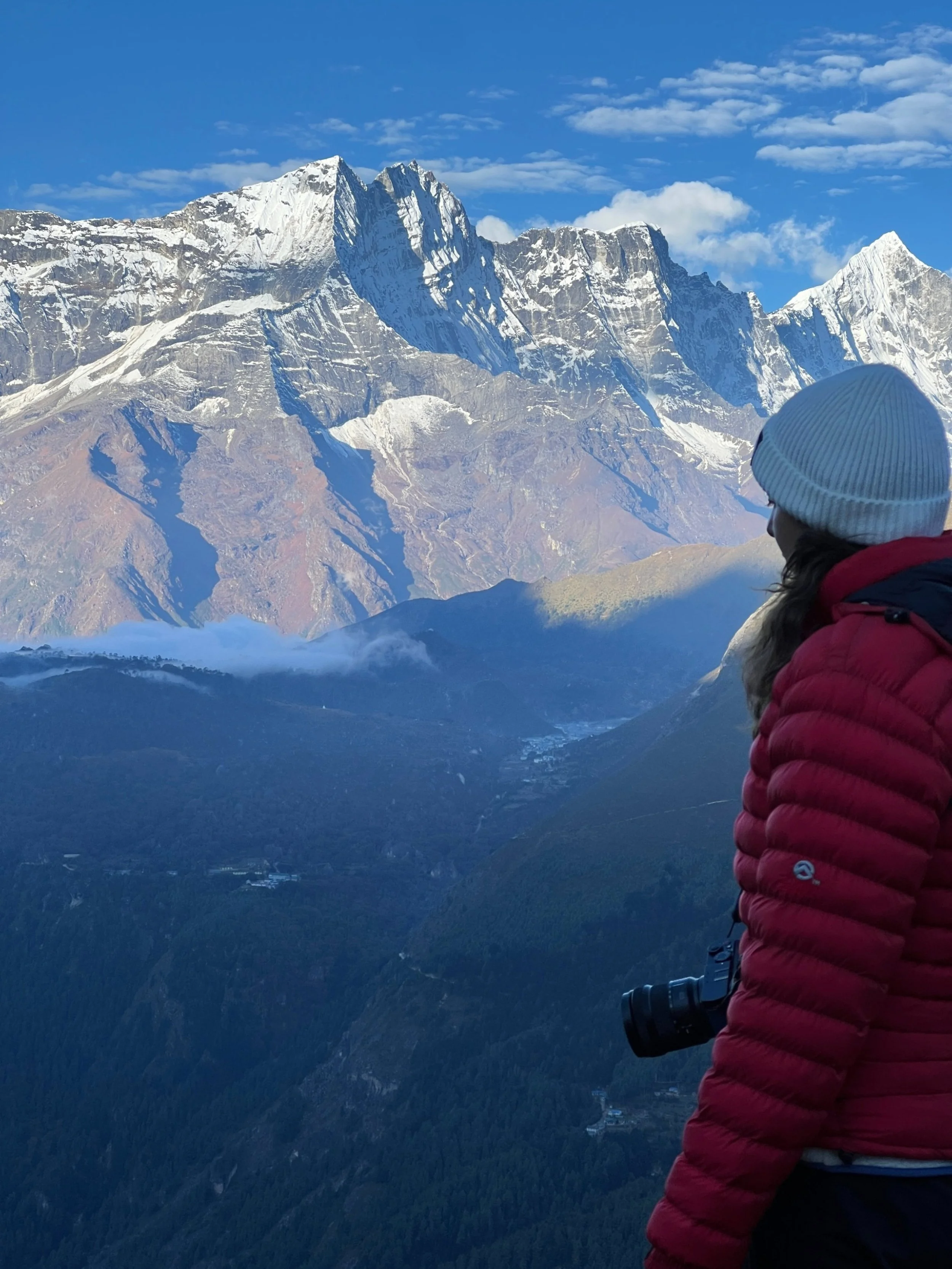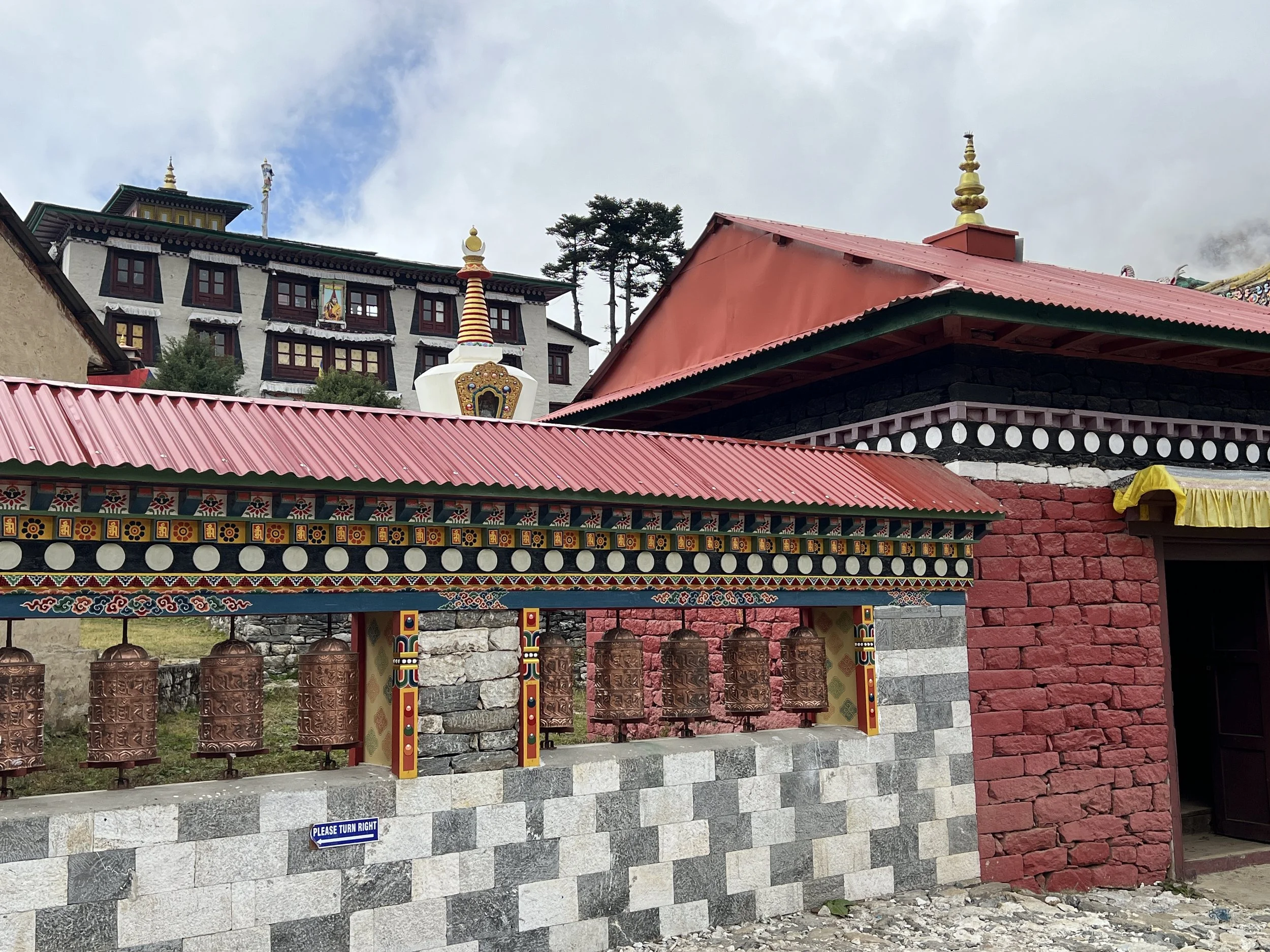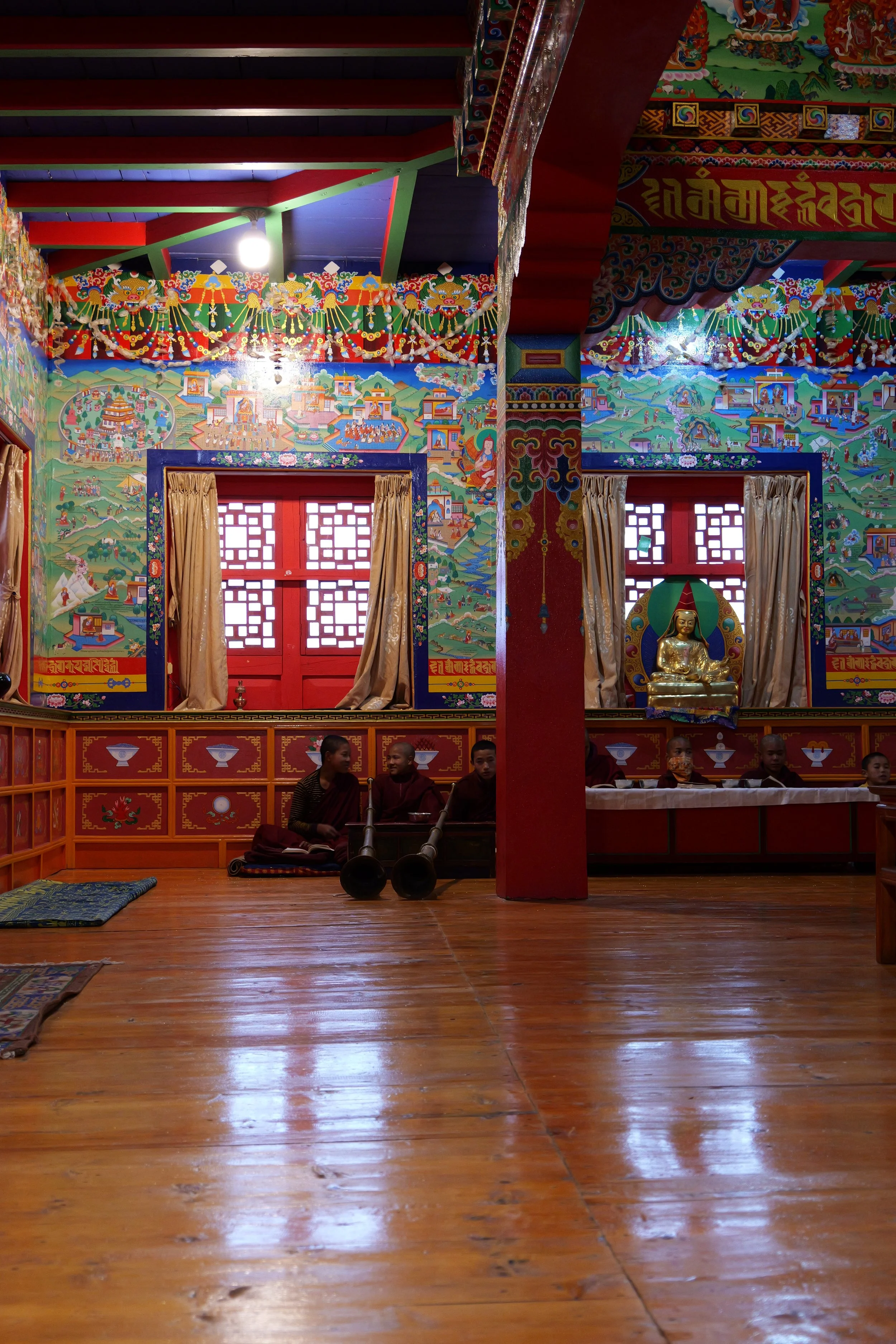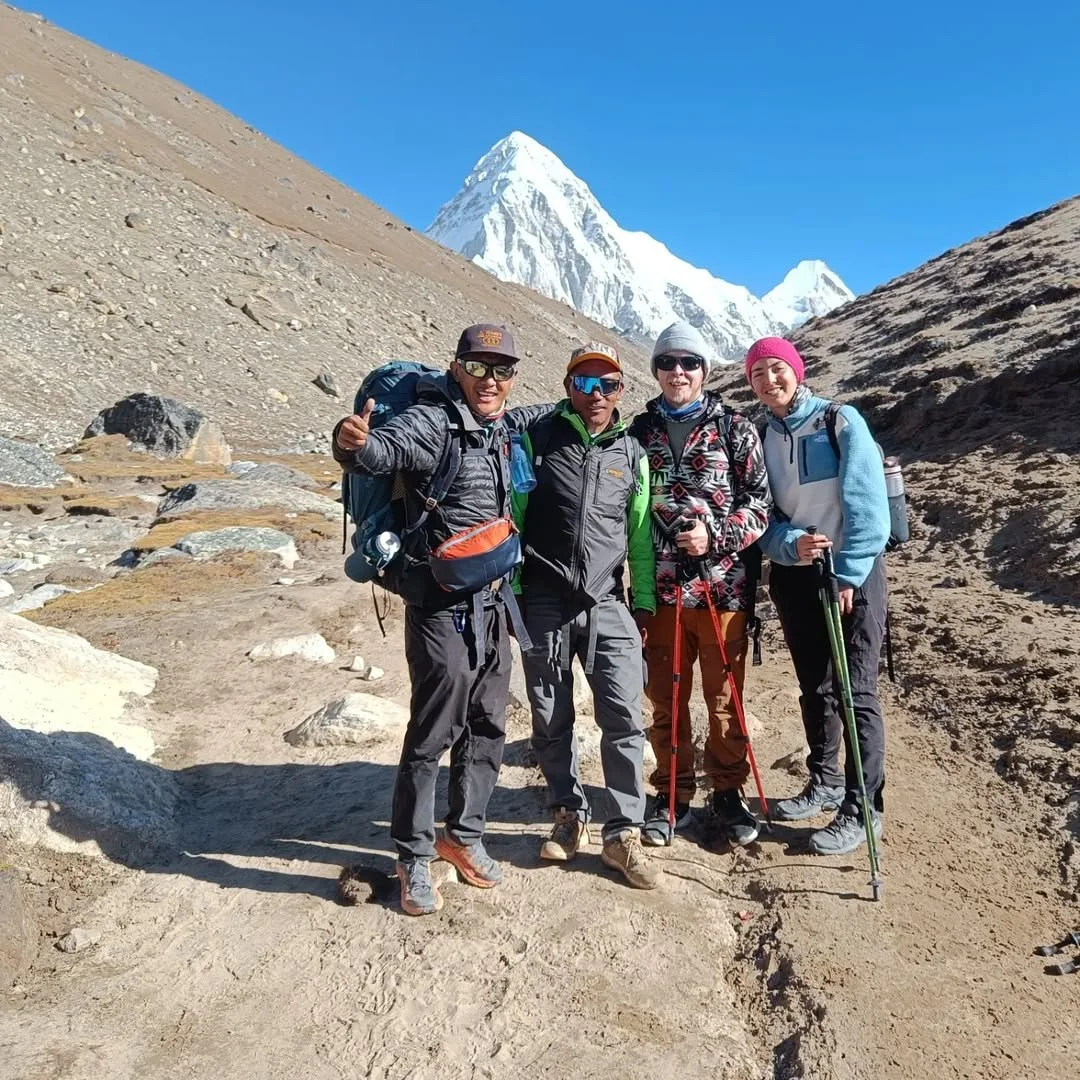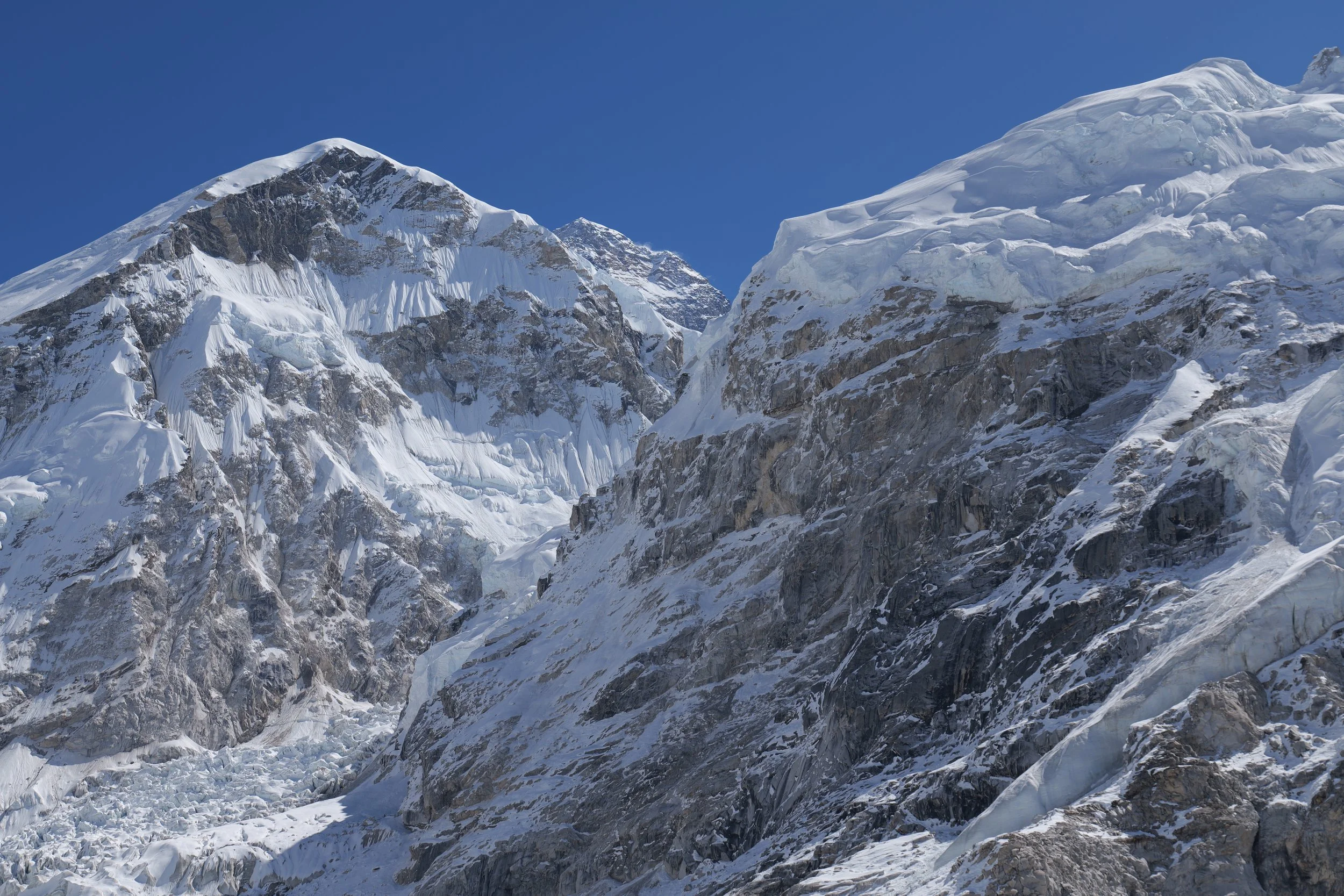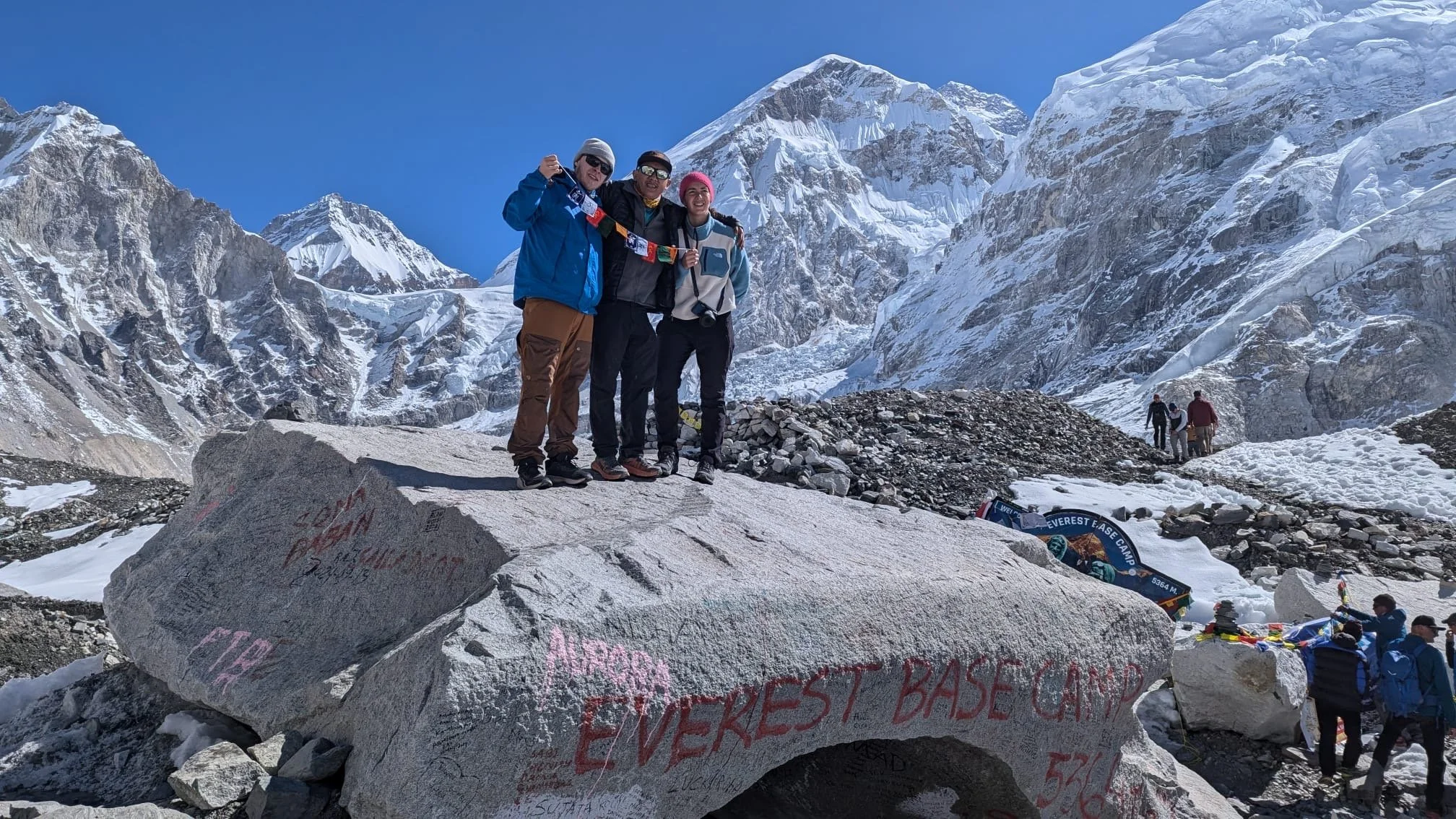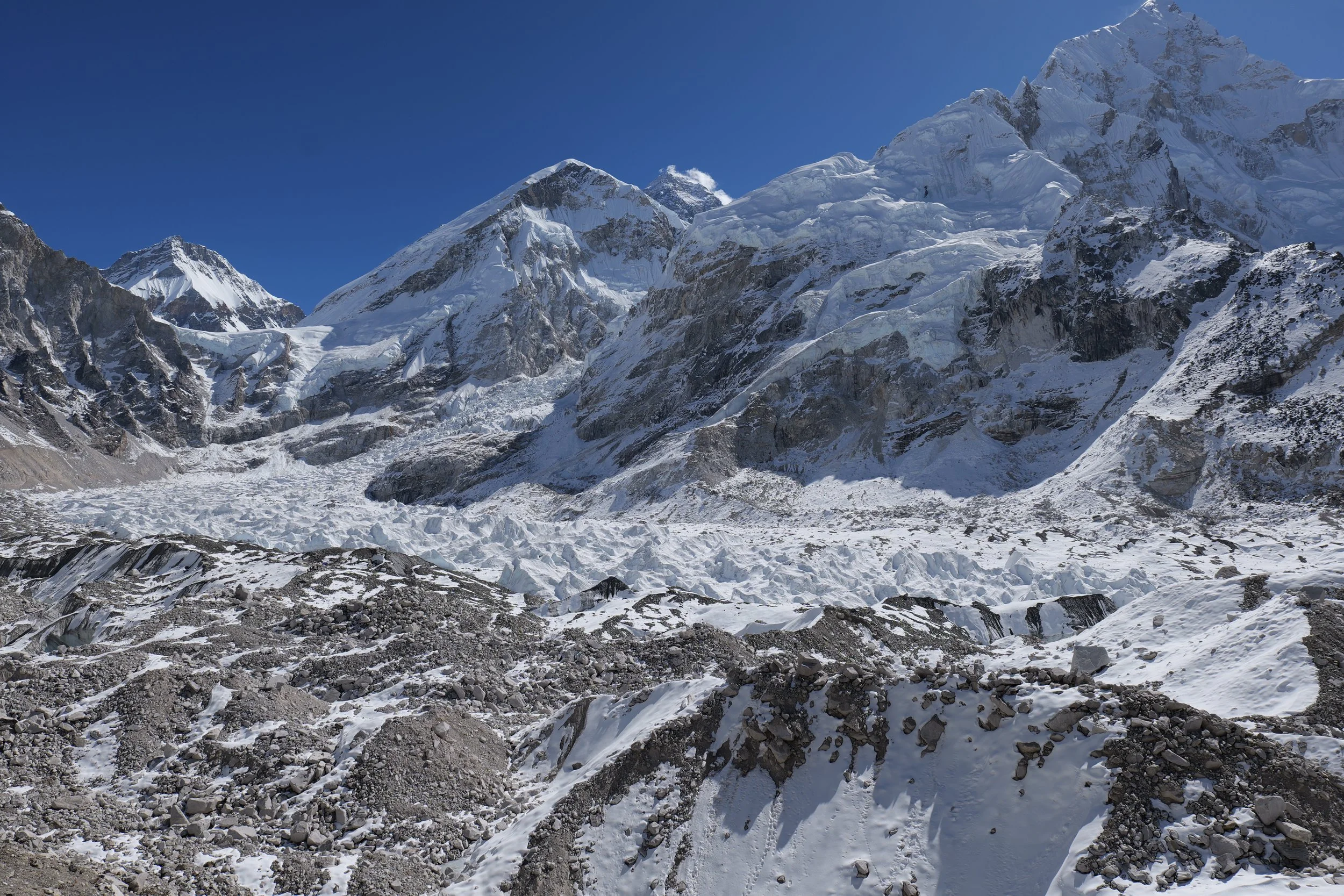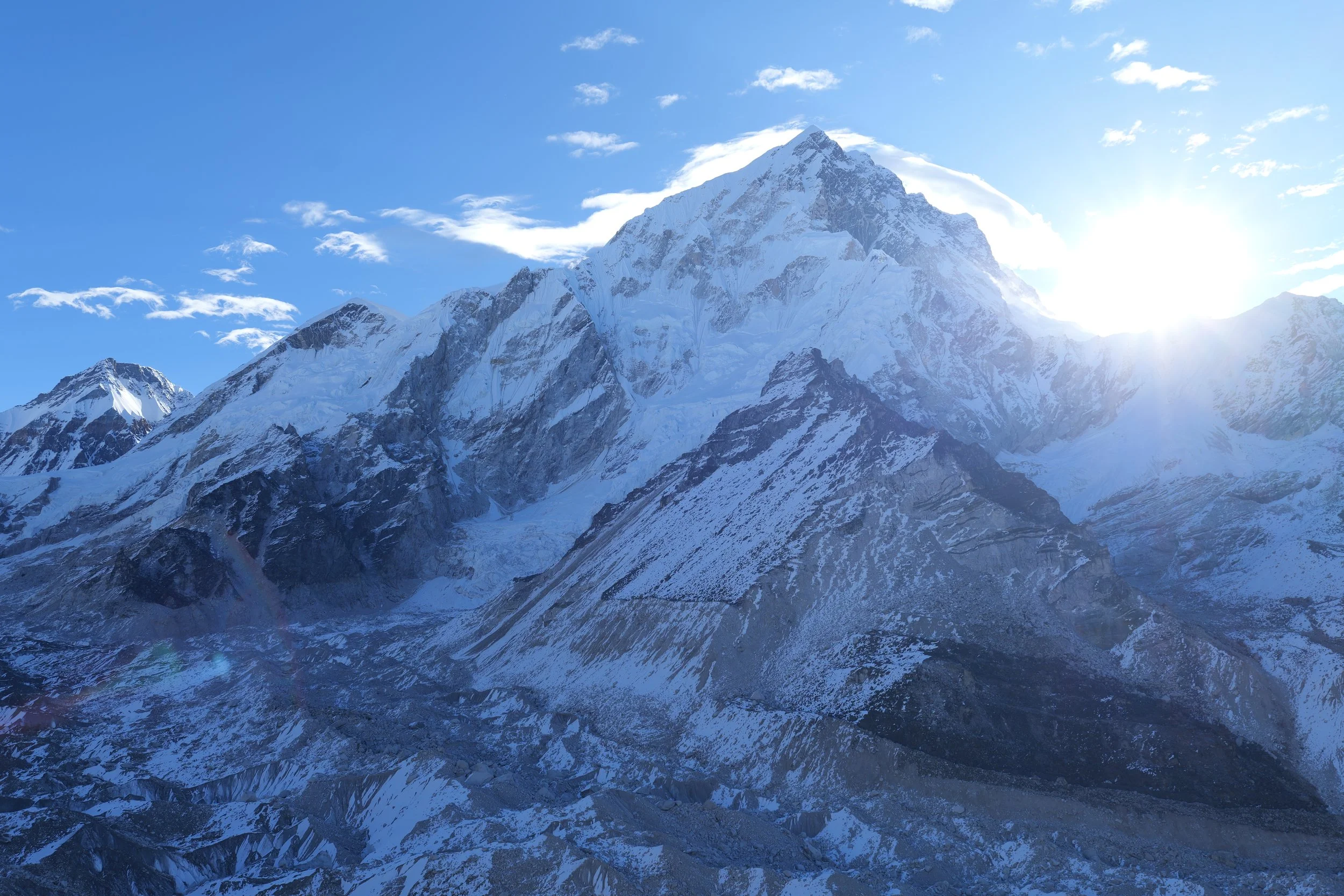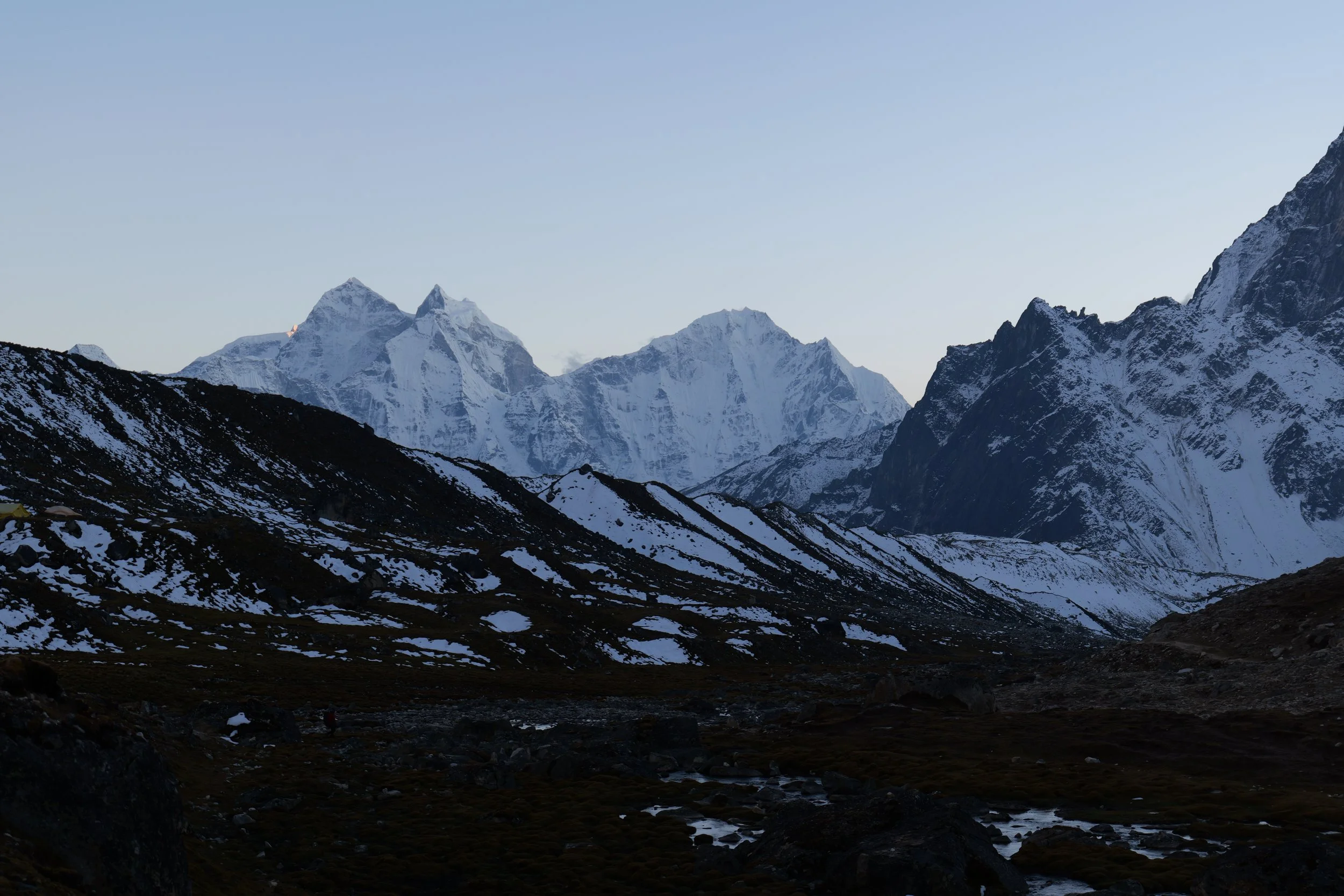I ANSWER ALL THE QUESTIONS ABOUT THE EVEREST BASE CAMP TREK
After posting my YouTube video about the Everest Base Camp Trek, I received numerous questions about my experience. To answer all your doubts, I will provide an overview of key information you should know before embarking on this incredible adventure.
-
I started the trek at the beginning of October (6-21/10). We were extremely lucky with the weather; we had sunshine almost throughout the whole trek. We had only one day of rain, which, from what I’ve heard, is quite rare.
The recommended period to do the EBC trek is from March to May, and from September to November.
-
The Trek is 135 km long (round trip) and took us 14 days to complete, including two acclimatisation days. On the way back, we took a slightly different route (via Phortse) that extended the hike by 5 extra kilometers.
On average, every day, we were hiking 10 km (600 to 800 m in elevation gain), and it took us around 4 hours.
Generally speaking, I felt very good throughout the whole hike, especially on the way to the Base Camp. The first week, I had a very good pace and the motivation was so high, that if you had asked me to climb the Everest, I would have probably said —‘yes, let’s do it!’
However, after a week of hiking, my body was slowly starting to feel exhausted, especially on the way back. I started to feel the altitude sickness from Lobuche until the Everest Base Camp, when we reached 5400 m, but as soon as we descended to a lower altitude, I instantly felt better. I had fewer from Namche to Phakding, so that was a rough hike. But the worst day for me was from Phortse to Namche. I started to feel sick, and I had no strength in my body; moreover, it didn’t help to see a big uphill at the beginning of the hike. That was also the only day when it was raining.
The biggest problem for me was the lack of sleep; I was struggling to get a good rest during the night for different reasons. A bit from the cold, and also because sometimes I would have a big spider looking at me, and being a big arachnophobe, that didn’t help me to fall asleep.
-
I didn’t use any trekking company. I went with a certified private guide that I met through a contact in Northern India.
To be more specific, one year before the trek, in a cute Tibetan souvenir shop in Leh (Northern India), I met a very friendly Tibetan lady, and while mentioning my interest in Nepal, she recommended her brother, who works in Nepal as a mountain guide. That’s why I decided to choose Tenpa as my private guide to Everest Base Camp, also to get a deeper insight into the Tibetan community in Nepal.
Tenpa is very organised and extremely knowledgeable, I absolutely recommend him as a guide! If you are interested, you can contact Tenpa on his Instagram @call.from.the.mountains
-
EBC, being the most popular trek in Nepal, was very busy up until the village of Dingboche.
But, for us, it didn’t matter; we always started hiking early at 7-8 AM. Since most of the people were travelling in big groups, we were trying to get past them at the very beginning, so we would have the hike for ourselves afterwards.
-
During the trek, it is necessary to use water-purifying tablets, to put in your water bottle half an hour before drinking. You can buy them in Kathmandu, and I’m pretty sure they also sell them in Namche Bazaar’s village.
I had Diamox with me (against altitude sickness), but in the end, I didn’t use it. Diamox can have some strong side effects, and I only had altitude sickness for one day (in Lobuche and at the EBC), so I decided not to take it, since the next day we were descending in elevation.
On the way back, my boyfried and many other hikers developed a strong cough, the so-called ‘Khumbu Cough’ —caused by cold, dry air at high altitudes, which irritates the respiratory tract, leading to a persistent and painful cough that can last up to one month. This is also why it’s recommended to wear a neck warmer covering your mouth, to avoid inhaling the cold-dry air.
My boyfried was able to buy a cough syrup in the village of Namche. I recommend taking it with you in advance, since it’s very common to get the Khumby Cough.
During the trek, we also used electrolytes to help our bodies stay hydrated.
When I had fewer on the way back in Namche, I took Ibuprofen for two days.
-
The best tea house during the trek was in the village of Phakding, named ‘See you Lodge & Restaurant’.
-
Unlike what most people think, the Everest Base Camp wasn’t the highlight of the trek.
Visiting the villages made this experience truly special. My favorite villages were:
Dingboche (4410 m) — A unique place with incredible views of Lhotse, Makalu, Cho Oyu, Nuptse, Kangtega, and the beautiful Ama Dablam. In the village, you can also find delicious bakeries and restaurants. I also liked the tea house where we were staying, ‘Snow Lion Lodge’, and the food there was delicious! We stayed two days in Dingboche, one was an acclimatisation day, where I went by myself in the surrounding area, took many pictures, and enjoyed the beautiful scenery! I’m planning one day to go back to Dingoche.
Namche Bazaar (3440 m) — It feels more like a city than just a village! You can find everything there: souvenirs, groceries, hiking shops, paintings, a tattoo artist, massages, restaurants, French bakeries, and even a YakBuck Coffee. We spent two nights here, but I could have stayed longer!
Tengboche (3867 m) — Even though I didn’t like the accommodation where we were staying, Tengboche is definitely a village worth visiting. There is a beautiful Buddhist monastery, great views, and also some delicious French bakeries!
-
1- Bring a sleeping bag and some warm clothes, like a thick puffer jacket, warm socks, gloves, a hat, and a neck warmer. After reaching 4000 meters, nights and early mornings were starting to get really cold, dropping below zero degrees.
2- Take some medicines, the most important are: electrolytes, flu medicines, cough syrup, water-purifying tablets, and altitude sickness pills.
3- Good acclimatisation: Don’t speed to the Base Camp, do a gradual ascent, resting a couple of nights in Namche Bazaar and Dingboche. Good rest and acclimatisation days are often underestimated, but they are fundamental if you want to complete the EBC trek successfully and without getting altitude sickness. I met a few trekkers who wanted to get as fast as possible to the Base Camp, avoiding the acclimatisation days, but in the end, they had to go back to Namche because they felt too sick to continue.
*(During the acclimatisation days, you do short hikes to higher altitudes and subsequent descents to lower elevations where you spend the night, to allow the body to adjust to thinner air.)
-
To prepare for the trek, I went to the gym 2-3 times/week (four months before the hike). I focused on cardio and strength training. My workout routine consisted of 25 minutes cardio (10 minutes on elyptical machines at maximum resistance; 10 minutes run and 5 minutes uphill hike (maximum grade) on the tapiroulan. After cardio, I did 25 minutes hiit exercises (with Down Dog App), which consist of short bursts of high-intensity physical activity.
Followed by 10 minutes of Yoga, which focuses on stretching, flexibility, and breathing exercises.
Unfortunately, where I live, I don’t have any mountains; however, I still tried to go for a walk and get my 10k daily steps.
Three weeks before the trek, I went to the Dolomites (where I grew up and where my mom lives), and I did many long hikes with a lot of elevation gain.
At the end of the day, the best preparation for the EBC is hiking; however, not everyone is lucky to be surrounded by mountains or amazing hikes, so you have to be creative and find other ways to get your exercise and physical preparation, like running, swimming, or the gym. No excuses!
-
The only places where it’s possible to see the tip of Everest are: Kala Patthar, Everest Base Camp, and the Everest View Hotel above Namche Bazaar.
I understand the hype around the Everest; however, this trek is more about the views, the villages, and the culture you experience along the way, which are a lot more impressive than the Everest itself! The mountains that actually impressed me were: Ama Dablam, Kangtega, and Nuptse.
-
I can’t tell for sure because I never did the Annapurna circuit. But I studied both treks before going, and I chose EBC mostly for the stunning views of the Khumbu Region.
If you are just starting with long treks in Nepal, I would recommend the EBC, because it’s one week shorter and less challenging than the Annapurna circuit. I also heard that the Everest Region is a bit more developed, so you will find better accommodation options.
Many trekkers are also complaining about the roads for jeeps that are extensive throughout the first part of the Annapurna Circuit trek, drastically reducing the amount of traditional trekking. For me, the Everest Base Camp trek was the perfect choice!
-
I’m planning to go back to Nepal in a couple of years, maybe in 2027, and do the Manaslu Circuit Trek in autumn. It’s less popular than the EBC trek, so it will be a completely different experience, and the views look equally stunning!
A dream in a more distant future would be to climb Mera (6476 m) and Island Peak (6189 m).
-
The first days from Lukhla to Namche were very warm, the sun was strong, and the temperature in the afternoon was 15 to 20 degrees. After surpassing 4000 meters, it started to feel cold, especially in the morning and during the night, when the temperature would drop below zero degrees. When we were hiking from Lobuche to the Everest Base Camp (the 14th of October), that day we had -16 degrees.
Of course, the higher you go, the colder it gets!
-
At the beginning of the trek, we had chargers in the rooms until the village of Dingboche; after that, we could only charge at the dining area for extra money.
-
I used a GoPro 9 and a Panasonic Lumix S9 camera with a 20-60 mm lens.
The GoPro is excellent while moving or during any physical activity, and the Lumix Camera is good for cinematic zoomed footage.
-
As I mentioned before, we had a private guide during the Trek —Tenpa, and in addition, we also had an amazing porter, Patra, who was carrying our 15 kg bag —which was a huge help during the trek!
To do the EBC trek, you don’t necessarily need to have a mountain guide with you; however, it is recommended for different reasons:
You are supporting the local economy and the Sherpa community
It’s safer to have someone who knows the place and can guide you if something happens at these altitudes
You don’t have to worry about the accommodations throughout the hike; the guide will be responsible for booking everything in advance. If you go by yourself, it might be difficult to find availability in the mountain houses, especially during the high season
You will have a porter with you so that you don’t need to carry a heavy backpack
You get to know more about the culture and the places
-
There is no specific tipping rule; however, from what I read online, it is recommended to tip 200 USD for the guide and 100 USD for the porter.
-
I used SafetyWing for my travel insurance. When you visit their site, there is the option for high-altitude treks in Nepal, and it covers everything during the hike. I paid around 400-500 USD for two weeks.
-
The cost for two weeks is around 2000 USD/pax (without counting flights to/from Nepal, tips, and travel insurance).
The price includes: private guide, porter, car ride to the airport, flights to/from Lukhla, permits, food, and accommodations for two weeks.
-
PROS:
Most beautiful mountain views in the Himalayas
possibility to have a guide that organises everything (transport + food + accommodations)
Possibility to have a porter that carries your bags (max. 25 kg)
The villages have many facilities (shops, cafes, bakeries, sometimes even ATM’s)
Sherpa and mountaineering culture
Nice local people and interesting trekkers
CHALLENGES:
Long and bumpy bus/car ride to get to Manthali airport (7-10 hours depending on the road conditions)
Unpredictable flight to/from Lukhla
Sometimes accommodations can be ‘adventurous’: shared toilets with many trekkers, not so clean beds, very cold nights, have to pay for warm showers, and spiders in the rooms
After a week, food gets very repetitive
Altitude sickness above 4500 m (shortness of breath, strong headache, no energy)
Last days are physically and mentally challenging
Common to get the ‘Khumby cough’
-
It was absolutely worth it! It was probably the best experience I’ve ever had. The mountain views, the Sherpa culture, and the people make this trek unforgettable. (I still get tears when I watch my YouTube video). Also, the preparation before the hike it’s a motivating goal to have. Even though the trek was a real challenge at times with many ups and some downs, it’s a life experience where you learn a lot about yourself!
I wouldn’t do it again, just because I want to keep my good memories from this experience, and I would rather challenge myself with a new trek.
MY FAVOURITE VILLAGES DURING THE TREK
D I N G B O C H E (4410 m) & A M A D A B L A M - K A N G T E G A V I E W S
N A M C H E B A Z A A R (3440 m) & T H E Y A K B U C K C O F F E E
T E N G B O C H E (3860 m) & T H E B U D D H I S T M O N A S T E R Y
